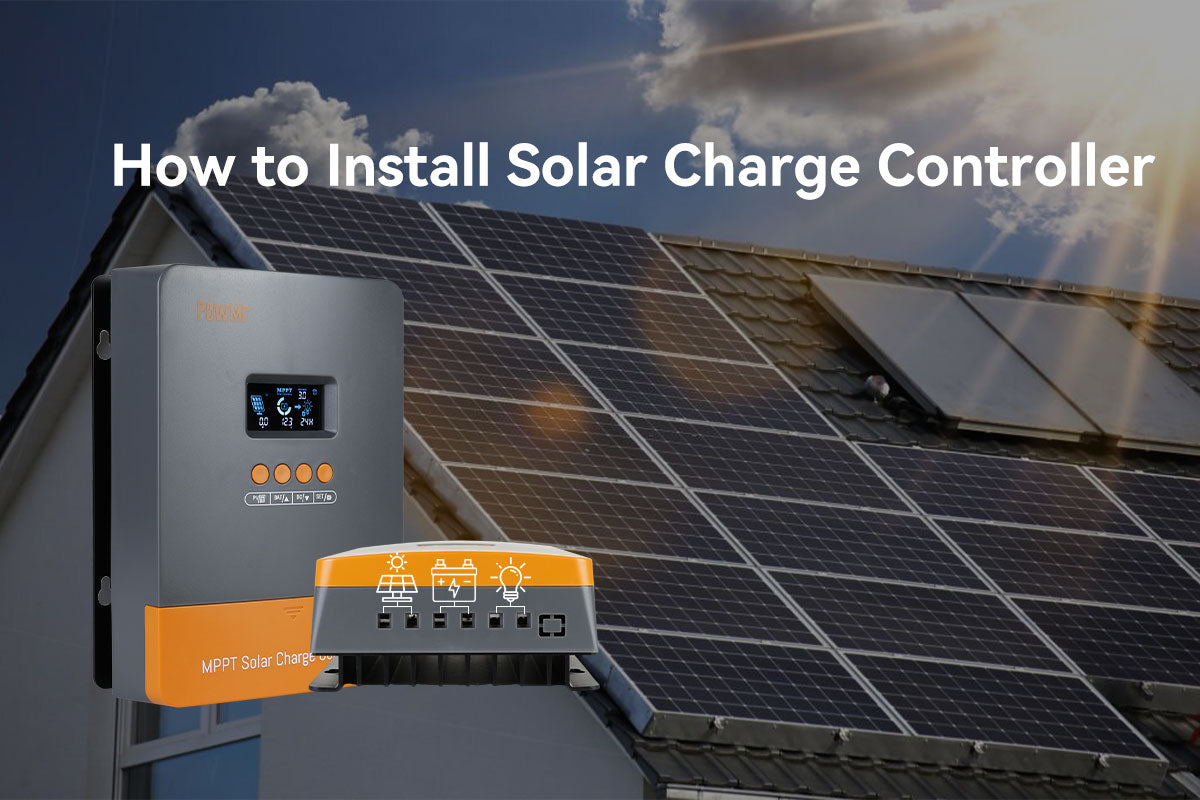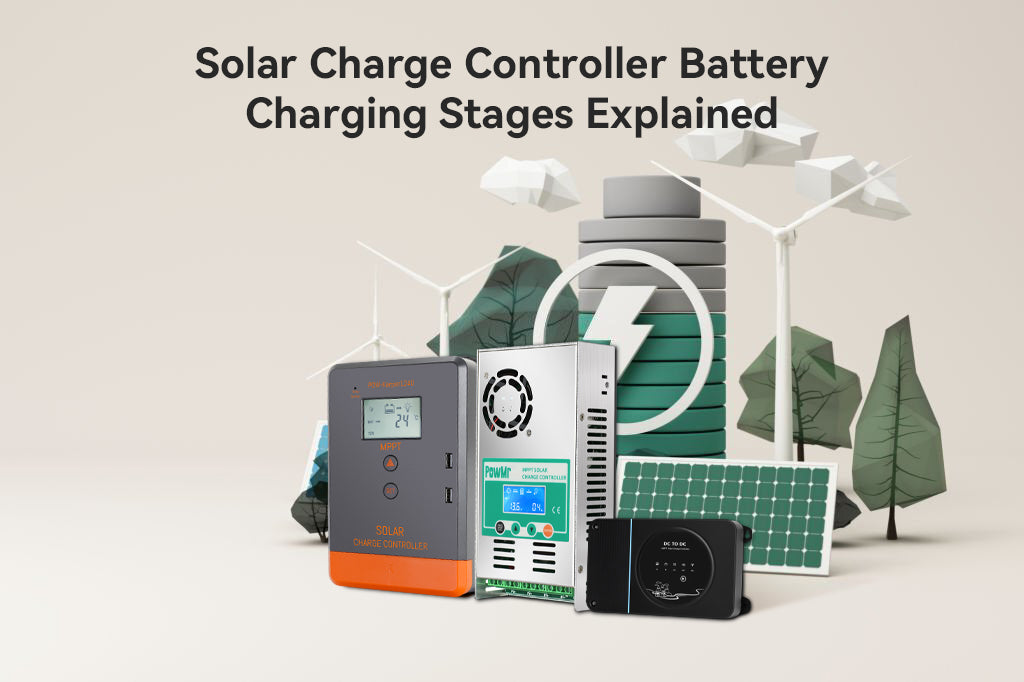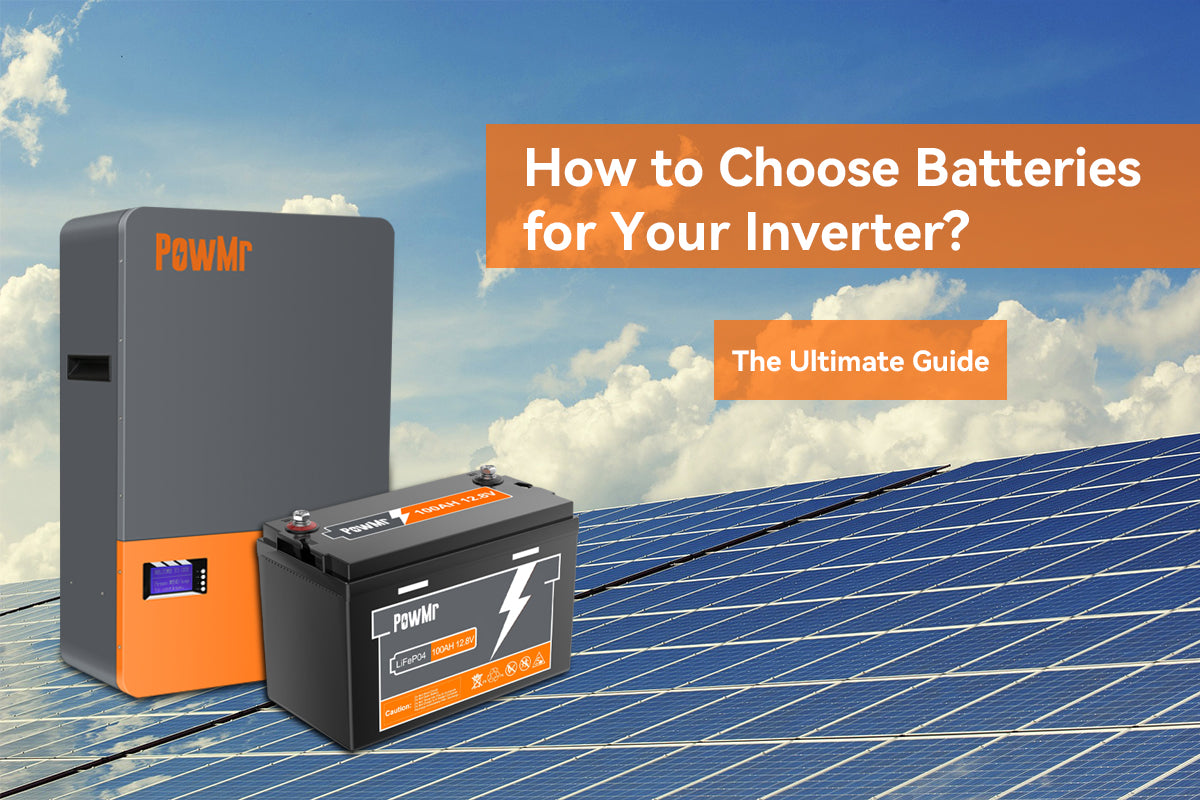ในบทความก่อนหน้านี้ เราได้ให้ข้อมูลเชิงลึกเกี่ยวกับ การเลือกประเภทและขนาดที่เหมาะสมสำหรับตัวควบคุมการชาร์จพลังงานแสงอาทิตย์ ในคู่มือนี้ เราจะพาคุณไปผ่าน กระบวนการติดตั้ง แบบทีละขั้นตอนสำหรับตัวควบคุมการชาร์จพลังงานแสงอาทิตย์ ไม่ว่าจะเป็นใน RV หรือระบบพลังงานแสงอาทิตย์แบบออฟกริดอื่น ๆ นอกจากนี้ เรายังจะครอบคลุมแนวทางที่สำคัญสำหรับการติดตั้งตัวควบคุมการชาร์จพลังงานแสงอาทิตย์และเสนอเคล็ดลับเกี่ยวกับการเดินสาย สองตัวขึ้นไป ของตัวควบคุมการชาร์จพลังงานแสงอาทิตย์.
- แนวทางการติดตั้งก่อนติดตั้งตัวควบคุมการชาร์จพลังงานแสงอาทิตย์
- การวางตำแหน่งสำหรับการติดตั้งตัวควบคุมการชาร์จพลังงานแสงอาทิตย์
- การเตรียมวัสดุและเครื่องมือ
- ลำดับการเดินสายควบคุมการชาร์จพลังงานแสงอาทิตย์
- ขั้นตอนการติดตั้งตัวควบคุมการชาร์จพลังงานแสงอาทิตย์
- วิธีการต่อสายควบคุมการชาร์จพลังงานแสงอาทิตย์สองตัวกับแบตเตอรี่แบงค์เดียว
แนวทางการติดตั้งก่อนติดตั้งตัวควบคุมการชาร์จพลังงานแสงอาทิตย์
ก่อนที่คุณจะเริ่มต้นการติดตั้งตัวควบคุมการชาร์จพลังงานแสงอาทิตย์ของคุณ สิ่งสำคัญคือต้องมีแผนที่ชัดเจนไว้ในมือ นี่คือแนวทางก่อนการติดตั้งที่ควรพิจารณา:
การวางตำแหน่งสำหรับการติดตั้งตัวควบคุมการชาร์จพลังงานแสงอาทิตย์
ก่อนการติดตั้ง จำเป็นต้องพิจารณาแง่มุมต่อไปนี้เพื่อระบุและกำหนดสถานที่ติดตั้งที่เหมาะสมและปลอดภัย:
- ติดตั้งตัวควบคุมในพื้นที่ที่มี การระบายอากาศ/การระบาย ที่ดี.
- รักษา ระยะห่างที่เพียงพอ รอบตัวควบคุม ให้แน่ใจว่ามีพื้นที่เพียงพอระหว่างผนังและตัวควบคุม (ไม่ต่ำกว่าระยะห่างขั้นต่ำที่ระบุในคู่มือ เนื่องจากรุ่นผลิตภัณฑ์ที่แตกต่างกันอาจมีข้อกำหนดที่แตกต่างกัน) สิ่งนี้ช่วยให้การระบายความร้อนและการเชื่อมต่อสายเคเบิลเป็นไปอย่างเหมาะสม.
- ติดตั้งตัวควบคุมบน ผนังที่ไม่ติดไฟ และตรวจสอบว่าไม่มีวัสดุที่ติดไฟอยู่ใกล้เคียง เป็นเรื่องปกติที่ตัวควบคุมจะมีการเพิ่มอุณหภูมิในระหว่างการทำงาน.
- เลือกสภาพแวดล้อมในการติดตั้งที่ หลีกเลี่ยงการสัมผัสกับแสงแดดโดยตรง ฝน ความชื้น และฝุ่น เก็บตัวควบคุมให้ห่างจากแหล่งของเหลวหรือก๊าซที่ติดไฟได้ เว้นแต่จะเป็นตัวควบคุมการชาร์จพลังงานแสงอาทิตย์ที่กันน้ำได้.
- ห้ามติดตั้งหรือวาง/ใช้งานตัวควบคุมบนหรือโดยตรงเหนือแบตเตอรี่ หรือในพื้นที่แคบที่มีแบตเตอรี่ แบตเตอรี่อาจปล่อยก๊าซระเบิดออกมา.
การเตรียมวัสดุและเครื่องมือ
ตัวควบคุมการชาร์จพลังงานแสงอาทิตย์ โดยทั่วไป มาพร้อมกับวัสดุที่จำเป็น สำหรับการติดตั้งอย่างเหมาะสม ตรวจสอบให้แน่ใจว่าสิ่งของต่อไปนี้ได้รับการเตรียมพร้อมอย่างเพียงพอสำหรับการตั้งค่าและการเดินสายของตัวควบคุมอย่างราบรื่น.
รายการวัสดุสำหรับติดตั้งตัวควบคุมการชาร์จพลังงานแสงอาทิตย์:
- ตัวควบคุมการชาร์จพลังงานแสงอาทิตย์
- สาย DC สามเส้นเพื่อต่อการเชื่อมต่อ DC บวก (+) ของตัวควบคุมเข้ากับขั้วบวกของการกระจาย DC
- สาย DC สามเส้นเพื่อต่อการเชื่อมต่อ DC ลบ (-) ของตัวควบคุมไปยังขั้วบวกของการกระจาย DC
- เบรกเกอร์กระแสตรง สามตัว ที่เข้ากันได้กับรุ่นของตัวควบคุม.
- สกรูติดผนังที่ออกแบบมาเพื่อรองรับน้ำหนักของตัวควบคุม.
โปรดตรวจสอบให้แน่ใจว่าคุณได้เตรียมวัสดุตามที่กล่าวข้างต้นตามข้อกำหนดและแนวทางที่ถูกต้อง
ลำดับการเดินสายควบคุมการชาร์จพลังงานแสงอาทิตย์
การกำหนดลำดับเฉพาะสำหรับการเชื่อมต่อจะช่วยให้การติดตั้งมีประสิทธิภาพและปลอดภัย
ให้เชื่อมต่อสายขั้วแบตเตอรี่กับตัวควบคุมการชาร์จเป็นอันดับแรก จากนั้นจึงเชื่อมต่อแผงโซลาร์เซลล์กับตัวควบคุมการชาร์จ หลีกเลี่ยงการเชื่อมต่อแผงโซลาร์เซลล์กับตัวควบคุมการชาร์จก่อนแบตเตอรี่เสมอ กลับ ลำดับนี้เมื่อ ถอดการเชื่อมต่อ.
วิธีติดตั้งตัวควบคุมการชาร์จพลังงานแสงอาทิตย์
ส่วนนี้ให้ข้อมูลอ้างอิงเบื้องต้นสำหรับการติดตั้ง MPPT/PWM solar charge controllers โดยใช้ POW-M60-PRO 60a MPPT solar charge controller เป็นตัวอย่างประกอบ สำหรับรายละเอียดเฉพาะ โปรดดูที่คู่มือผู้ใช้ของตัวควบคุมที่เกี่ยวข้อง.
บันทึก:
อย่าปิดเบรกเกอร์วงจรในระหว่างกระบวนการติดตั้งทั้งหมด.
ขั้นตอนที่ 1. ติดตั้งตัวควบคุมการชาร์จพลังงานแสงอาทิตย์
ทำเครื่องหมายจุดติดตั้งบนผนังตามรูยึดของตัวควบคุม จากนั้นใช้สว่านเจาะรูติดตั้งบนผนังที่จุดที่ทำเครื่องหมายไว้และใส่ปลั๊กยางขยายลงในรู ติดตั้งตัวควบคุม ในแนวตั้งกับพื้น โดยให้ขั้วต่อหันลงด้านล่าง.
ขั้นตอนที่ 2. เชื่อมต่อแบตเตอรี่กับตัวควบคุมการชาร์จพลังงานแสงอาทิตย์ก่อน
เชื่อมต่อแบตเตอรี่ก่อนเสมอ เพื่อให้ตัวควบคุมสามารถรับรู้แรงดันไฟฟ้าของระบบได้ อย่าเปลี่ยนลำดับการเชื่อมต่อโดยพลการ เพราะอาจทำให้เกิดข้อผิดพลาดในการรับรู้แรงดันไฟฟ้าของระบบได้ รักษาความยาวสายระหว่างแบตเตอรี่และตัวควบคุม ให้สั้นที่สุดเท่าที่จะทำได้ โดยควรอยู่ระหว่าง 30 ซม. ถึง 100 ซม..
เพื่อป้องกันการลัดวงจรและการกลับขั้ว ให้แน่ใจว่าสายบวก (+) จากแบตเตอรี่เชื่อมต่อกับขั้วบวก (+) ที่ตรงกันบนตัวควบคุม และสายลบ (-) จากแบตเตอรี่เชื่อมต่อกับขั้วลบ (-) ที่ตรงกันบนอุปกรณ์.
หากแบตเตอรี่เชื่อมต่อ ในทิศทางตรงกันข้าม เอาต์พุตของตัวควบคุมจะมีขั้วไฟฟ้าเหมือนกับแบตเตอรี่ด้วย อย่า เชื่อมต่อโหลดใด ๆ ในช่วงเวลานี้ เนื่องจากอาจทำให้โหลดและตัวควบคุมเสียหายได้ ระมัดระวังหากตัวควบคุมไม่มีการป้องกันโหลดย้อนกลับ.
ขั้นตอนที่ 3. เชื่อมต่อโหลด DC และตัวควบคุมการชาร์จพลังงานแสงอาทิตย์
เชื่อมต่อสายบวก (+) ของโหลด DC เข้ากับขั้วบวก (+) ที่กำหนดสำหรับโหลดบนตัวควบคุมการชาร์จ และเชื่อมต่อสายลบ (-) ของโหลด DC เข้ากับขั้วลบ (-) ที่กำหนดสำหรับโหลดบนตัวควบคุมการชาร์จ.
ขั้นตอนที่ 4. เชื่อมต่อแผงโซลาร์เซลล์กับตัวควบคุมการชาร์จพลังงานแสงอาทิตย์
เชื่อมต่อสายบวกจากแผงโซลาร์เซลล์ไปยังขั้วบวกที่ตรงกันบนตัวควบคุม และเชื่อมต่อสายลบไปยังขั้วลบ โดยต้องใส่ใจในเรื่องของขั้วไฟฟ้าเพื่อป้องกันความเสียหายที่อาจเกิดขึ้นกับระบบ
ขั้นตอนที่ 5. เชื่อมต่ออินเวอร์เตอร์โซลาร์กับตัวควบคุมการชาร์จโซลาร์
หากคุณต้องการติดตั้งอินเวอร์เตอร์ โปรดดูแผนภาพการใช้งานระบบของตัวควบคุมด้านล่างนี้ ห้ามเชื่อมต่ออินเวอร์เตอร์กับด้านโหลด ของตัวควบคุมการชาร์จพลังงานแสงอาทิตย์ มิฉะนั้นอาจทำให้เกิดความเสียหายที่ไม่สามารถแก้ไขได้กับอุปกรณ์

ขั้นตอนที่ 6. ตรวจสอบก่อนเริ่มใช้งาน
ดูรูปภาพด้านล่างสำหรับรายละเอียดการเดินสาย หากทุกอย่างเรียบร้อย และสายไฟทั้งหมดเชื่อมต่ออย่างแน่นหนา ให้ปิดเบรกเกอร์ในด้านแบตเตอรี่ ด้านโมดูล PV และด้านโหลดตามลำดับเพื่อเริ่มต้นตัวควบคุม.
ขั้นตอนที่ 7. เปิดและตั้งค่าคอนโทรลเลอร์ชาร์จพลังงานแสงอาทิตย์
เมื่อการเชื่อมต่อทั้งหมดถูกทำให้แน่นหนาแล้ว คุณสามารถเปิดตัวควบคุมการชาร์จพลังงานแสงอาทิตย์ได้ ในส่วนใหญ่ ตัวควบคุมการชาร์จพลังงานแสงอาทิตย์จะมีไฟ LED แสดงสถานะของระบบ ให้ตรวจสอบไฟเหล่านี้เพื่อให้แน่ใจว่าทุกอย่างทำงานได้อย่างถูกต้อง.
เข้าถึงการตั้งค่าของตัวควบคุมการชาร์จและกำหนดค่าตามสเปคของระบบของคุณ ทดสอบระบบโดยการสังเกตกระบวนการชาร์จแบตเตอรี่ การกระจายโหลด และประสิทธิภาพโดยรวม.
วิธีการต่อสายควบคุมการชาร์จพลังงานแสงอาทิตย์สองตัวกับแบตเตอรี่แบงค์เดียว
คุณอาจพบว่าจำเป็นต้องใช้คอนโทรลเลอร์สองตัวขึ้นไปในระบบเนื่องจากสถานการณ์ต่อไปนี้:คุณอาจพบว่าจำเป็นต้องใช้คอนโทรลเลอร์สองตัวขึ้นไปในระบบเนื่องจากสถานการณ์ต่อไปนี้:
- การขยายระบบพลังงานแสงอาทิตย์โดยการรวมแผงโซลาร์เซลล์และแบตเตอรี่เพิ่มเติมเข้าไป
- เมื่อคุณมีแผงโซลาร์เซลล์ที่มีสเปคต่างกัน การรวมกันอาจไม่ให้ประสิทธิภาพที่ดีที่สุด โชคดีที่การใช้ตัวควบคุมการชาร์จหลายตัวสามารถแก้ไขปัญหานี้ได้
- การติดตั้งแผงโซลาร์เซลล์ในสถานที่ที่มีระดับการสัมผัสแสงแดดที่แตกต่างกัน ส่งผลให้มีประสิทธิภาพของแผงที่แตกต่างกัน การมอบหมายตัวควบคุมแต่ละตัวให้กับแผงเหล่านี้ช่วยเพิ่มผลผลิตพลังงานรวมของระบบ
ขั้นตอนที่ 1. เชื่อมต่อควบคุมการชาร์จพลังงานแสงอาทิตย์กับควบคุมการชาร์จพลังงานแสงอาทิตย์
กำหนดสเปคของตัวควบคุมและแผงโซลาร์เซลล์ จากนั้นเชื่อมต่อแผงโซลาร์เซลล์ในอาร์เรย์ (ไม่ว่าจะเป็นแบบอนุกรมหรือขนาน) กับตัวควบคุมการชาร์จ ซึ่งขึ้นอยู่กับสเปคของตัวควบคุมการชาร์จโซลาร์ของคุณ รวมถึงแรงดันไฟฟ้าและกระแสที่ออกจากแผงด้วย
ขั้นตอนที่ 2. เชื่อมต่อควบคุมการชาร์จพลังงานแสงอาทิตย์แบบขนาน
ไม่ว่าจะมีจำนวนตัวควบคุมกี่ตัวก็ตาม ในขณะที่มั่นใจว่ายอดรวมของกระแสจากแต่ละแถวที่ส่งไปยังแบตเตอรี่ ไม่เกิน กระแสชาร์จที่กำหนดของแบตเตอรี่ ให้ทำตามแผนภาพด้านล่างเพื่อต่อสองตัวควบคุมและเชื่อมต่อกับแบตเตอรี่.
บันทึก:
เชื่อมต่อเอาต์พุตของตัวควบคุมการชาร์จทั้งสองในลักษณะขนานกับแบตเตอรี่แบงค์เพื่อรักษาแรงดันไฟฟ้าที่ส่งมอบรวมทั้งหมด ตัวควบคุมแต่ละตัวควรเชื่อมต่อกับแผงโซลาร์เซลล์ที่แตกต่างกัน ขั้นตอนนี้สามารถทำซ้ำได้กับตัวควบคุมจำนวนใดก็ได้ตามที่จำเป็น.



